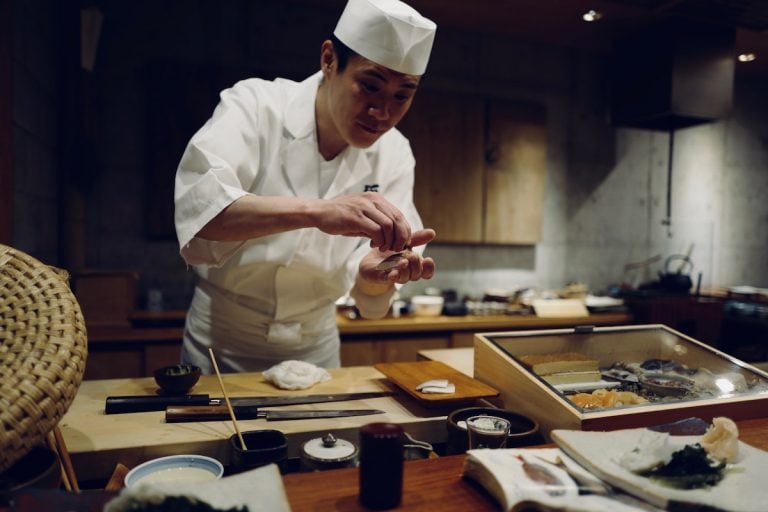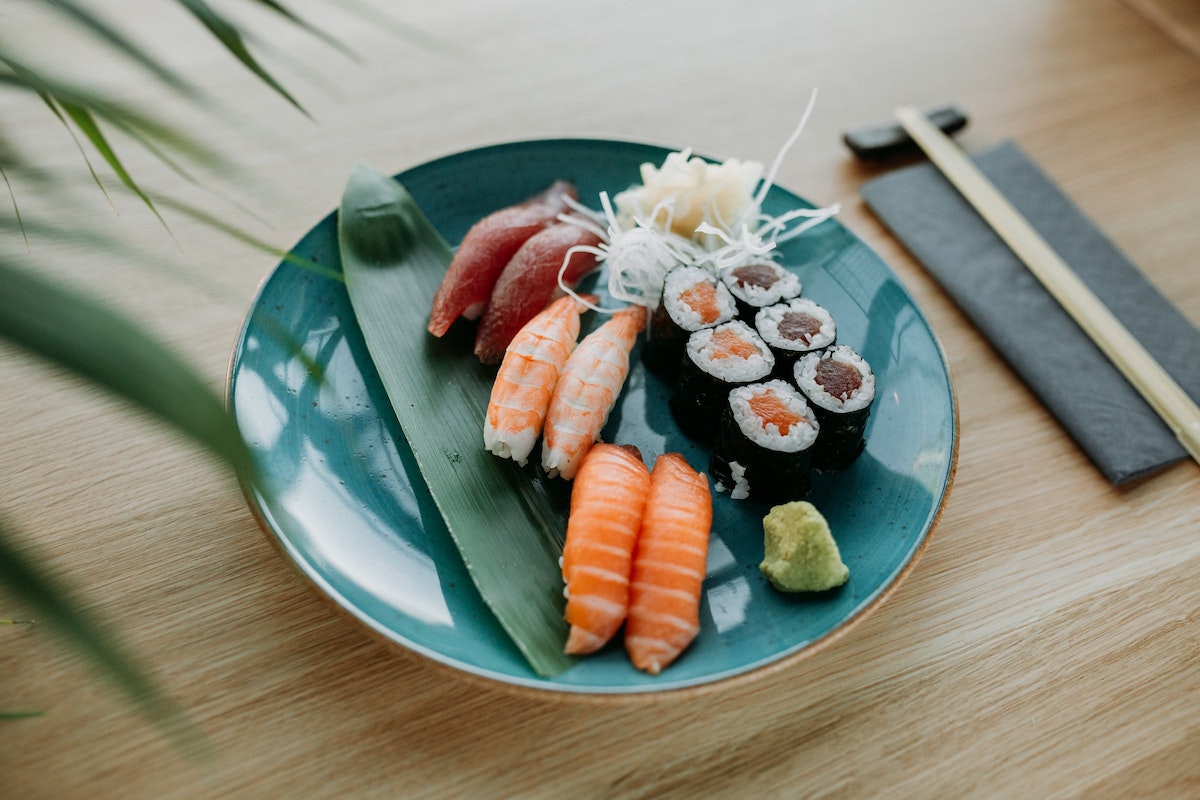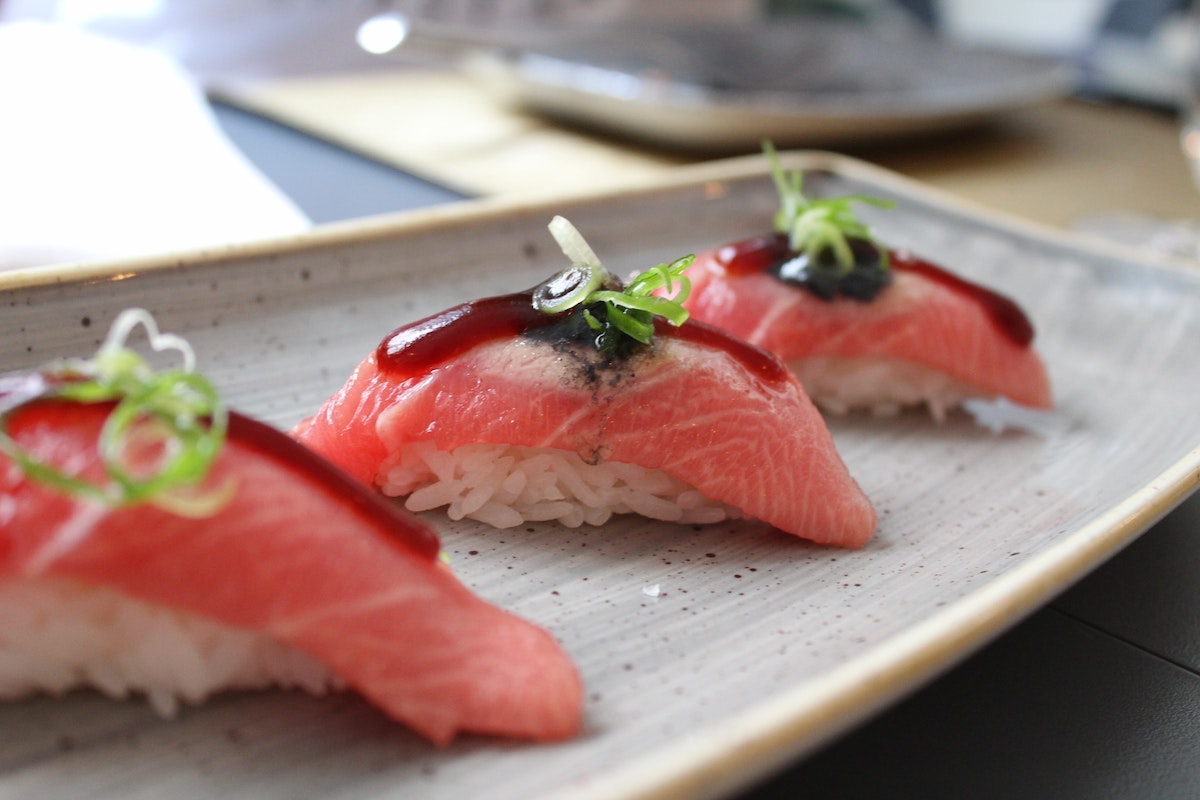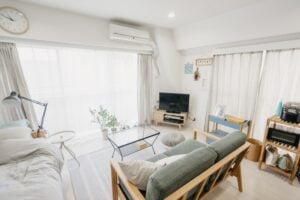
For dedicated Japanese foodies, ‘Omakase’ may sound familiar. But it is often misinterpreted as ‘the dish of the day’ or ‘Chef’s recommendation’. Read on to discover the true meaning of ‘Omakase’ and why is should be an essential part of your Japan experience.
What is an Omakase dinner?
Omakase (おまかせ) translates as ‘I’ll leave it up to you’. It is essentially trusting the professional to decide something for you. Omakase can be used in many industries including dining, fashion and (if you are brave enough!) hair salons.
Ordering omakase in a restaurant means you are relinquishing control of your meal to your chef. They will provide you with a selection of curated dishes depending on seasonality and their professional judgment.
Omakase dining sprung up during the 90’s economy bubble in Japan. Suddenly, people had their pockets lined enough Yen to sample lavish sushi dishes that were previously denied to most people. But this caused a problem.
Most people did not know how to order in upscale sushi restaurants. So, the idea of omakase was created to prevent any embarrassment from intimidated diners.
Which is better, Kaiseki or Omakase?
Kaiseki is a little different to omakase. Kaiseki is a well-practised and perfected set of many light dishes. There usually between 9 – 11 dishes per Kaiseki meal. Each morsel has been honed by the skill of a high-class chef.
Omakase is a little more spontaneous. You will interact directly with the chef. They will give their recommendations based on what ingredients are in season and which they think you may like depending on your personal tastes.

Why is Omakase so expensive?
This personal interaction is one reason why omakase can be a costly choice. You will probably have the chef’s undivided attention. Some omakase sushi restaurants will serve only a maximum of 6 – 10 guests in one evening.
Also, the cost of an omakase meal can vary. Some restaurants will be upfront about the price. In others, you will receive the total only after you have finished your meal.
Most good-quality omakase sets will cost between $125 – $250, often with slightly cheaper lunch menus. However, there are some more cost effective omakase options! For example, Sushi Tokyo Ten in Shibuya offers Omakase dinner for ¥7,700 and lunch for just ¥3,850. I recommend doing a little google research. You will surely find an omakase place in your price-range.
Why should I try Omakase? (benefits)
You will have a truly unique experience
Most dining experiences are kept very separate from the kitchen area. Think about it. It’s pretty unusual that you ever see the chef’s face, never mind talking with them!
But with Omakase you can communicate directly with the person feeding you. Your chef may ask you questions or try to get a feel for your taste by observing your expressions. Your meal will be personally bespoke to you. In turn, you can watch a culinary professional perform their skills as a pure artform. You may also gauge in conversation with them and discuss their reasoning for their recommendations.

High class dining with no pressure
Nothing takes the fun out of special night out than the threat of making a fool out of yourself. Are you the kind of diner that panics about mispronouncing something on the menu? Do you dither about selecting the right bottle of wine? Omakase takes all that pressure away. Simply relax and let the professionals do the work. There are experienced in making all the right decisions, so you don’t have to!
No FOMO
We all know the feeling. Your food has arrived at your table, and it looks great. But somehow everyone else’s meal looks better. You wish you chose something different. But with omakase you are guaranteed to get the chef’s own guidance on the best dish available.
Omakase is also an excellent option for couples and small groups. No one has to take responsibility for the choice of food. You simply enjoy it all together, under the specialist’s direction.
Omakase Wine & Cocktails
Omakase dining doesn’t stop at food! You can also partake in omakase for drinks too. Selected restaurants offer an omakase service for wine. This is an ideal option if you are unsure the best pairing for your meal.
Also, many high-class bars in Japan have omakase options for cocktails. Bartenders will enquire about your preferences and create a personal cocktail to delight your palate. Omakase style cocktails allows you to experiment and try new flavors you might have never sampled before!
Where is the best place to try Omakase?
The best place to try Omakase may depend on your budget. Here are a few options:
Sush M in Aoyama
- Lunch omakase – from ¥8,800
- Dinner omakase – from ¥22,000
Sushi M is the lovechild of sushi master Michimasa Nakamura and sommelier extraordinaire, Yoshinobu Kimura. Expect innovative sushi dishes with perfectly paired sake and wine. If you want an extra treat, indulge in the ‘Sushi m Special Course’ for ¥33,000.
Iguchi in Nakameguro
- Yakitori course – ¥ 5,480
If Yakitori is your thing, be sure to book a reservation at Iguchi. They offer a wide selection of yakitori delicacies with both traditional Japanese flavors and western influences.
Sukiyabashi Jiro in Ginza
- Dinner omakase – from ¥44,000
Sukiyabashi Jiro was the first ever sushi restaurant to achieve 3 Michelin stars. Since, it has won international acclaim as the subject for the documentary ‘Jiro Dreams of Sushi’. Please note this extremely exclusive restaurant does not take casual reservations. If you are interested, you must book through a personal concierge service.
If you are Foodie and want to learn more, please see our other articles about living in Japan. Our experts post everything you need to know about sampling the best food in Japan.
Interested in working in the service industry? See our latest hotel and restaurant jobs in Japan for foreigners here.
Article Author: Beth Lawson
















